Multi-Dimensional Chromatography
Systems, Informatics, and Applications
An advanced seminar on comprehensive multi-dimensional gas chromatography
Speakers
J. Samuel Arey,
Swiss Federal Inst. of Technology at Lausanne (EPFL)
Dr. J. Samuel Arey is a postdoctoral fellow in the Laboratory for
Computational Chemistry and Biochemistry, at the Swiss Federal Institute
of Technology at Lausanne (EPFL).
Shilpa Deshpande,
University of Nebraska - Lincoln
Shilpa Deshpande is a graduate research assistant in the Computer
Science and Engineering Department, University of Nebraska - Lincoln.
Her research is developing clustering algorithms for GCxGC.
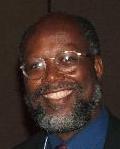 Jean-Marie (John) Dimandja,
Spelman College, Atlanta GA, USA
Jean-Marie (John) Dimandja,
Spelman College, Atlanta GA, USA
Dr. Jean-Marie (John) Dimandja received his B.A. in mathematics from
Miami University (Oxford, Ohio) in 1989, and his M.S. and Ph.D. in
Analytical Chemistry from Southern Illinois University (Carbondale,
Illinois) in 1992 and 1997, respectively. His graduate work was
performed under the tutelage of Professor John B. Phillips, the
inventor of comprehensive two-dimensional gas chromatography (GCxGC).
Dr. Dimandja was a research scientist at the Centers for Disease
Control and Prevention (CDC) from 1997 to 2002, where he developed new
biomonitoring methods for environmental toxicant analysis by GCxGC/TOF
MS and GCxGC-ECD. He joined the faculty at Spelman College (Atlanta,
Georgia) in 2002, where he is currently an associate professor in the
Chemistry Department. He maintains a strong research group funded by
federal grants from NSF and NIH and corporate support from several
companies that is focused on instrument and method development in
GCxGC. Dr. Dimandja has authored over 120 publications/presentations,
and he has organized and/or chaired several conference symposia on
GCxGC at PITTCON, ACS, ISCC and the International Symposium on
Multidimensional Gas Chromatography.
Glenn Frysinger,
U.S. Coast Guard Academy
Glenn Frysinger is a Professor of Chemistry at the United
States Coast Guard Academy. He received a B.S in chemistry (1987), and
a M.S. and Ph.D. in experimental physical chemistry (1992) from
Rensselaer Polytechnic Institute in Troy, NY, USA. He did postdoctoral
work at SRI International in Menlo Park, CA, USA, before joining the
faculty at the USCGA in 1994 to teach introductory chemistry, physical,
and analytical chemistry. He has teamed with CAPT Richard Gaines over
the last ten years to develop instrumentation and applications for
comprehensive two-dimensional gas chromatography (GCxGC). His focus
application areas include forensic analysis of ignitable liquids in
fire debris, oil spill fingerprinting in environmental samples, and
geochemical markers in sediments. He is an author or co-author of 14
publications and 48 presentations related to GCxGC.
Gregory J. Hall,
U.S. Coast Guard Academy
Dr. Gregory J. Hall is a Lieutenant Commander in the U.S. Coast Guard
and Assistant Professor of Chemistry at the U.S. Coast Guard Academy.
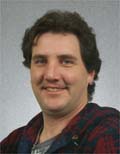 Robert K. Nelson, Woods Hole Oceanographic Institution, Woods Hole MA, USA
Robert K. Nelson, Woods Hole Oceanographic Institution, Woods Hole MA, USA
Robert Nelson received his B.S. in biology from Central Connecticut
State University in 1980 and is currently a research associate in
the Marine Chemistry and Geochemistry Department at the Woods Hole
Oceanographic Institution. His research interests are the
determination of the chemical composition and molecular structure of
compounds that reside in sea-surface films; measurement of the range of
surface elasticities that occur in coastal, continental shelf, and open
ocean environments; development of systems for observing chemical
constituents and their enrichments in sea-surface films; study of the
effects of biogenically derived surfactant compounds on gas exchange
rates at the air-sea interface.
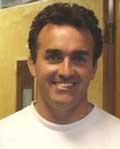 Christopher M. Reddy, Woods Hole Oceanographic Institution, Woods Hole MA, USA
Christopher M. Reddy, Woods Hole Oceanographic Institution, Woods Hole MA, USA
Dr. Christopher Reddy received his B.S. in chemistry from Rhode Island
College in 1992 and his Ph.D. in chemical oceanography from the
University of Rhode Island in 1997. He is currently an Associate
Scientist in the Marine Chemistry and Geochemistry Department at the
Woods Hole Oceanographic Institution, one of the world's premier
centers for oceanographic research. Dr. Reddy's research focuses on
investigating the source, transport, and fate of organic contaminants
in coastal and oceanic waters; developing new analytical techniques for
studying environmental chemistry; and chemical ecology. He has more
than 60 research publications and received an award from the Office of
Naval Research Young Investigator Program in 2003. More recently, he
was named a 2006 Aldo Leopold Leadership Fellow, which provides
training to select scientists so that they can communicate science more
effectively to the general public, media, and policy makers.
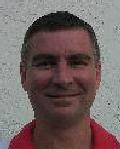 Stephen E. Reichenbach, University of Nebraska – Lincoln, Lincoln NE, USA
Stephen E. Reichenbach, University of Nebraska – Lincoln, Lincoln NE, USA
Professor Stephen E. Reichenbach earned a Ph.D. in computer science from
the College of William and Mary (1989), a master's degree in computer
science from Washington University in St. Louis (1985), and a
bachelor's degree in English from the University of Nebraska (1976). He
is a professor of Computer Science and Engineering (CSE) Department at
the University of Nebraska – Lincoln (UNL), where he has been on the
faculty since 1990 and served as department chairman from 1996–2000.
He held a National Research Council research associateship in the
Visual Information Processing Laboratory at the NASA Langley Research
Center and an ASEE research fellowship in the Landsat 7 Project Science
Office. He has authored more than 100 technical articles on
digital image processing and image information systems. In 1994, Dr.
Reichenbach founded Internet Nebraska Corporation, the oldest and
largest Nebraska-based Internet service provider. In 2003, Dr.
Reichenbach founded GC Image, LLC, to develop advanced informatics
software for comprehensive two-dimensional gas chromatography (GCxGC).
 John V. Seeley,
Oakland University
John V. Seeley,
Oakland University
John V. Seeley is an Associate Professor of Chemistry at Oakland
University in Rochester, MI. He received a bachelor of science degree
in chemistry from Central Michigan University in 1989 and a Ph.D. in
physical chemistry from the Massachusetts Institute of Technology in
1994. He then did three years of post-doctoral research at the United
States Air Force Geophysics Laboratory. He joined the faculty of
Oakland University in 1997. His research group develops new techniques
for characterizing complex mixtures of organic compounds. Over the past
six years they have focused on comprehensive two-dimensional gas
chromatography (GC x GC). Professor Seeley's research group has created
a series of flow-switching modulators that allow GC x GC separations to
be generated without the need of additional consumables or high-cost
equipment. They have applied flow-switching GC x GC to a multitude of
scientific problems including the study of atmospheric chemistry, the
evaluation of breath analysis as a tool for non-invasive disease
detection, and the rapid characterization of petrochemical mixtures.
 Qingping Tao,
GC Image, LLC
Qingping Tao,
GC Image, LLC
Dr. Qingping Tao is vice-president for research and development at GC
Image, LLC, in Lincoln NE, and principal investigator of projects
funded by the National Science Foundation and the National Institutes
of Health. He earned B.E. degree in computer applications in 1997 from
Hefei University of Technology, a M.E. degree in computer software in
2000 from the University of Science & Technology of China, and a Ph.D.
degree in computer science in 2005 from the University of Nebraska -
Lincoln. His research interests are machine learning, data mining,
learning methods for multiple-instance learning, bioinformatics,
multi-agent systems, kernel methods, and Markov chain Monte Carlo methods.
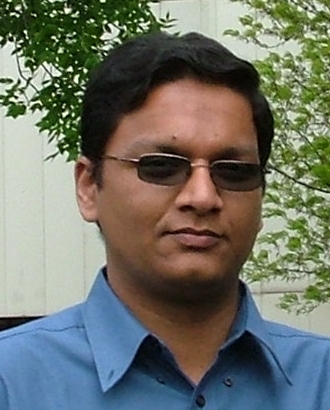 Arvind Visvanathan,
University of Nebraska - Lincoln
Arvind Visvanathan,
University of Nebraska - Lincoln
Arvind Visvanathan is a doctoral student and graduate research assistant
in the Computer Science and Engineering Department, University of Nebraska
- Lincoln. He earned a bachelor's degree in computer engineering from the
D.Y. Patil College of Engineering, an affilated college of the University
of Poona, in May, 2001, and a master's degree in computer science from
the University of Nebraska - Lincoln, in August, 2003. He research is
developing information-theoretic algorithms for mass spectral library
search.
 Jean-Marie (John) Dimandja,
Spelman College, Atlanta GA, USA
Jean-Marie (John) Dimandja,
Spelman College, Atlanta GA, USA Robert K. Nelson, Woods Hole Oceanographic Institution, Woods Hole MA, USA
Robert K. Nelson, Woods Hole Oceanographic Institution, Woods Hole MA, USA Christopher M. Reddy, Woods Hole Oceanographic Institution, Woods Hole MA, USA
Christopher M. Reddy, Woods Hole Oceanographic Institution, Woods Hole MA, USA Stephen E. Reichenbach, University of Nebraska – Lincoln, Lincoln NE, USA
Stephen E. Reichenbach, University of Nebraska – Lincoln, Lincoln NE, USA John V. Seeley,
Oakland University
John V. Seeley,
Oakland University Qingping Tao,
GC Image, LLC
Qingping Tao,
GC Image, LLC Arvind Visvanathan,
University of Nebraska - Lincoln
Arvind Visvanathan,
University of Nebraska - Lincoln